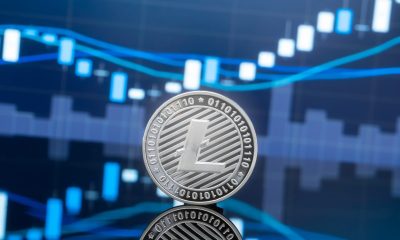Bitcoin Investor
Bitcoin Vs. Bitcoin Cash – What’s the Difference?
Securities.io is committed to rigorous editorial standards. We may receive compensation when you click on links to products we review. Please view our affiliate disclosure. Trading involves risk which may result in the loss of capital.
Table Of Contents
Understanding the differences between Bitcoin vs Bitcoin Cash is a crucial step in gaining a better grasp of the journey cryptocurrencies have endured so far. Nowadays, Bitcoin Cash and Bitcoin comparisons are rare. Both coins have grown to become staples in the crypto market.
However, this scenario wasn't always the case. There was a time, not too long ago, that these two coins had the entire crypto community in a fuss. Here's the story behind one of the most controversial Bitcoin hard forks to date.
Bitcoin
To understand the differences between Bitcoin vs Bitcoin Cash, you need to start your journey in 2008. It was this year that Bitcoin's anonymous creator, Satoshi Nakamoto, introduces the world to Bitcoin. Bitcoin was the first digital currency to eliminate double-spend threats. As such, it is considered the first truly successful digital currency.
Bitcoin was built from the ground up to provide an equal playing field for network participants and users. Part of this strategy included limiting the block size of Bitcoin's blockchain to 1MB. This size restraint guaranteed that any computer would have the technical capabilities to approve transactions on Bitcoin's blockchain.

Bitcoin vs Bitcoin Cash – Proof of Work -ForecastNews
Bitcoin's 1MB blocks are approved every ten minutes by the mining community. These blocks can hold anywhere from 1,000 and 1,500 transactions per block. While this rate was excellent during the early stages of Bitcoin, it is hardly enough to support a full-fledged Bitcoin global economy. In comparison, VISA's network can handle over 20,000 transactions per second (tps).
Scalability Issues
As Bitcoins network continued to expand, so did the amount of data squeezed into each block. For example, in 2010 the average block size was 100kb. By January 2015, the average data size of a block was 600K. This increase in data also added to network congestion, which led to increased fees and transaction delays.
By 2017, scalability concerns had grown to be too much. The cryptomarket was experiencing record growth, and Bitcoin's network was screeching to a halt due to transaction delays and volatility. No one could use Bitcoin for its originally stated purpose as a “peer-to-peer electronic cash system.” The problem became a bigger concern when retailers stopped accepting Bitcoin for fear of taking huge losses during the transaction delays. At one point, the network fees were often higher than the transaction amount.
A Rift Forms
Bitcoin had essentially failed its first stress test and many in the community felt that changes needed to be made to the core protocol of the coin if it was to ever fulfill Nakamoto’s original vision. Top members of the Bitcoin community debated intensely over how to resolve the issue. On one side of the argument, you had long-time Bitcoiners like Roger Ver, who believed that Bitcoin's core protocol could be changed without destroying the purpose of the coin. He and a large group of other Bitcoiners proposed an increased block size. The larger blocks could solve the problem temporarily and allow Bitcoin to be used again for daily transactions.
The other side of the debate saw Bitcoin core developers against the idea of altering such an essential part of Bitcoin's design. These developers believed that there were other technologies such as SegWit and the Lightning Network that could help alleviate Bitcoin's congestion without changing its original design. These developers also argued that the change could lead to endless block size upgrades in the future.
Bitcoin Cash
In August 2017, the Bitcoin Cash hard fork took place. The new coin had a larger block size. Specifically, developers first designed the coin to handle 8 MB blocks but later updated the network to 32 MB in size. This strategy greatly increased the tps rate for Bitcoin Cash. In September 2018, a stress test of the network revealed that the network was capable of handling 25,000 transactions per block.
Technical Similarities
As a hard fork of Bitcoin, Bitcoin Cash shares several technical characteristics with Bitcoin. Both networks utilize a Proof-of-Work (PoW) consensus mechanism to approve transactions and issue new tokens in the form of mining rewards. Both networks utilize the Emergency Difficulty Adjustment (EDA). This system adjusts the difficulty of the network every 2016 blocks or roughly every two weeks. The goal is to provide the coins with a predictive monetary supply.
Bitcoin vs Bitcoin Cash Drama
The Bitcoin vs Bitcoin Cash debate continued to rage on after the hard fork. Bitcoin core members accused Bitcoin Cash's team of attempting to hijack Bitcoin users by making it difficult to distinguish which coin was the original Bitcoin. Notably, Ver especially took heat because he is the owner of Bitcoin.com.

Bitcoin vs Bitcoin Cash vs USD – CoinMarketCap
Bitcoin Cash Fork
Interestingly, Bitcoin Cash underwent a hard fork in November 2018. This time, it was Bitcoin Cash that was the coin split into Bitcoin Cash ABC (Now Bitcoin Cash) and Bitcoin Cash SV (Satoshi Vision). Notably, Bitcoin Cash SV increased the size limit of its blocks to 128MB.
Differences in Updates
After the launch of Bitcoin Cash, Bitcoin began to take on its own technical updates to solve scalability issues. One of the first updates added to the network was the Segregated Witness (SegWit) update. This update separates certain data from the transaction to reduce congestion.
This update led the way for the next major upgrade Bitcoin underwent, the Lightning Network. The Lightning Network is a second-layer protocol that utilizes personal payment channels to allow users to conduct unlimited transactions for a fraction of the cost of using Bitcoin's network directly. The Lightning Network is considered by many as Bitcoin's best chance to reduce scalability concerns in the future.
Two Different Journeys Down Blockchain Ave
Today, Bitcoin and Bitcoin Cash serve two different niches in the community. Bitcoin, as the original cryptocurrency, is more valuable than ever, partly because it retains its original structure. Bitcoin Cash is also more valuable now that the network has managed to secure more partners and projects. No matter how you prefer your Bitcoin, both of these coins appear to have a long bright future ahead of them.
To learn more, make sure to visit our Investing in Bitcoin and Investing in Bitcoin Cash guides.
How to Buy Bitcoin (BTC) and Bitcoin Cash (BCH)
These are two of the most popular cryptocurrencies in the world. The exchanges below enable the purchase of both of these digital assets.
Uphold – This is one of the top exchanges for United States & UK residents that offers a wide range of cryptocurrencies. Germany & Netherlands are prohibited.
Uphold Disclaimer: Terms Apply. Cryptoassets are highly volatile. Your capital is at risk. Don’t invest unless you’re prepared to lose all the money you invest. This is a high-risk investment, and you should not expect to be protected if something goes wrong..
Kraken – Founded in 2011, Kraken is one of the most trusted names in the industry with over 9,000,000 users, and over $207 billion in quarterly trading volume.
The Kraken exchange offers trading access to over 190 countries including Australia, Canada, Europe, and is a top exchange for USA residents. (Excluding New York & Washington state).
David Hamilton is a full-time journalist and a long-time bitcoinist. He specializes in writing articles on the blockchain. His articles have been published in multiple bitcoin publications including Bitcoinlightning.com
You may like


Investing In Bitcoin (BTC) – Everything You Need to Know


Investing In Bitcoin Cash (BCH) – Everything You Need to Know


Investing In Ethereum (ETH) – Everything You Need to Know


Investing In Dogecoin (DOGE) – Everything You Need to Know


Investing in Litecoin (LTC) – Everything You Need to Know


Investing in Ripple (XRP) – Everything You Need to Know